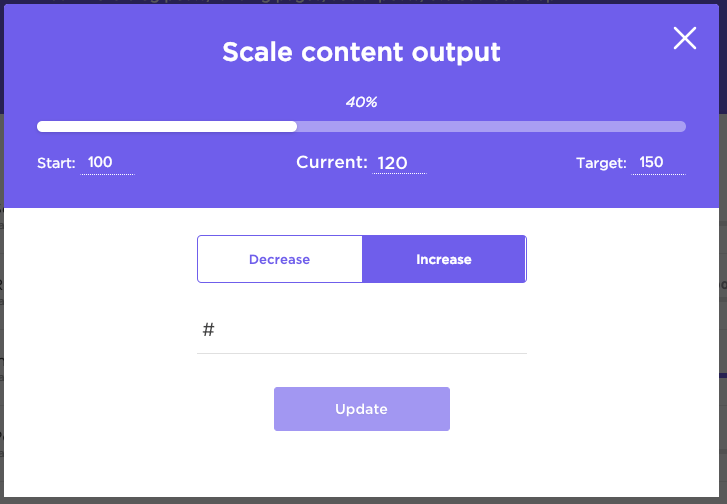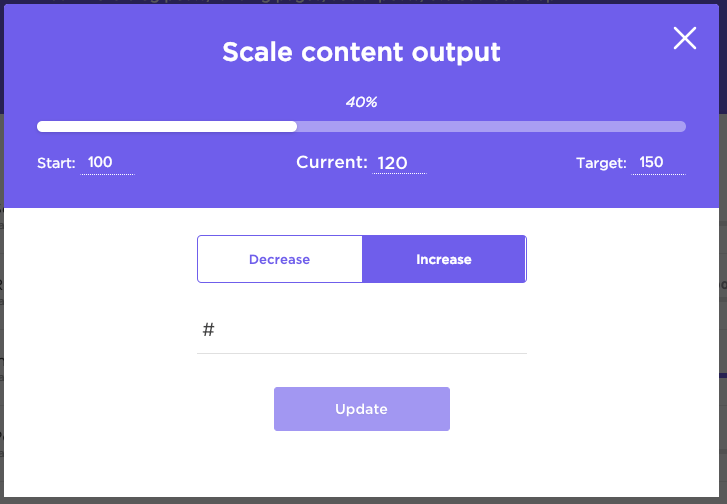How To Set Effective Sales Goals (With 5 Examples) 2025

Sorry, there were no results found for “”
Sorry, there were no results found for “”
Sorry, there were no results found for “”

For most companies, a typical sales goal focuses on selling as much as they can.
But those aren’t the best kinds of sales goals.
It’s like saying ‘having fun’ is your summer vacation goal.
But what is fun?
Splashing in a pool all day or going scuba diving?
Similarly, in sales too, you need to define the hows to form well-articulated goals.
In this article, we’ll discuss what sales goals are, their types, five examples, and how to set excellent sales goals. We’ll also tell you how to achieve your sales goals and answer some related FAQs.
Ready to make it rain? 💸 Let’s go!
Sales goals are quantifiable outcomes for your sales team that are usually documented in your sales plan.
Set, track, and crush your sales goals with ease! Get ClickUp’s free Sales Plan Template to stay organized, monitor progress, and hit your targets faster. 🚀
Some realistic goals can be:
Once you establish the goals, your sales team can translate them into measurable and achievable actions that make you money.
And maybe then, you can buy that vacation home with a pool you’ve always dreamt of.
Is a goal different from an objective?
Take a look at our in-depth goals vs. objectives comparison to find out.

Here are five types of sales goals most businesses set:
If there’s an ultimate sales goal, it’s this one.
An annual goal helps you make a roadmap and decide everything from personal sales goals to professional ones.
It can be goals about:
Everyone, including board members and investors, will have their eyes on these goals as these are crucial for a company’s success.
Your sales team shouldn’t just focus on your annual sales goal because those can take time to achieve.
You don’t want to demotivate your team with slow progress, right?
Instead, your team goal should be a weekly, quarterly, or monthly sales goal. For example, you could have a monthly sales goal like sell $20,000 worth of summer hats by the end of August.
You know how some people get tanned, some don’t, and others turn lobster red after hitting the beach?
Well, sales reps are like that too.
Some thrive when selling to a specific industry, some do well in all fields, and others have an average performance on any given day.
As they’ll all have different success rates, you need to plan and set individual sales goals for every salesperson.
Every sales person needs to set activity goals to have control of their overarching goals. Activity goals measure what the sales rep needs to do to nail those broader sales goals.
You can usually measure activity goals as the number of:
Sometimes your sales rep or your team will surpass their sales goals.
But before you plan to celebrate your profits with a summer trip to Bali…
Enter: stretch goals for sales reps.
Stretch goals are targets set above what’s expected to help sales reps go the extra mile.
If your reps meet their stretch goals, you can offer them incentives.
It can be money or a free supply of ice cream for a year to beat the heat. 🍦😋
A sales goals example list can be like a long summer day… it never ends!
Fortunately, you only have to set goals that fit your needs.
To give you an idea, here are some sales goals and objectives examples:
Now that you’re familiar with some examples of sales goals, let’s start setting sales goals right away.
An annual revenue goal? An individual quarterly goal? Or a lead-generation monthly goal?
As a sales team leader or manager, you have to set relevant sales goals based on your business goals.
For example, to measure your company’s success, you could set a revenue target.
But if you want to improve efficiency, aiming for a higher win rate (the rate at which your sales team converts prospects into customers) might make more sense.
The bottom line is, you should connect every set sales goal to the business intent.
No, you don’t put them in a suit and tie. 👔
Instead, SMART sales goals are:
Use these factors as a checklist to make every objective a SMART goal and drive your business towards success.
Now, you can focus on goals that give your sales team a little extra challenge.
However, ensure it’s not impossible, like counting how many watermelon seeds you ate.
But also not too easy, like sweating in mid-July.
Instead, when you set it, take a look at past sales data and see how likely it’s for your reps to meet the goal. This will help you strike a balance between making it challenging and achievable.
Incentives in the sales world are as common as floral prints and flip-flops on beaches.
But how do you design your incentive system?
Start by getting input from your sales staff or team on the incentive program’s rules, rewards, and other aspects. This way, you can create a system that works for everyone.
And remember, a salesperson who hits a stretch goal should get a better incentive than someone who meets an individual goal.
Know what’s not motivating?
Not knowing why you’re tackling the goal in the first place!
Discuss and clarify your sales goals with your team so they know what’s expected.
For example, let’s say you want your reps to increase lead generation.
But you must give them a reason to do it, like how it’ll help increase revenue, expand the company, or get incentives.
It’ll motivate them to hit their sales target!
You should be able to track the progress of every sales professional in the company. Use goal-setting templates to track your team’s progress.
A tracking system tells you where you stand and updates you on whether you’re on the right path or not.
Otherwise, setting goals can be as pointless as using sunscreen when you’re inside the house watching Netflix.
Once you have a sales strategy in place, here’s how you can achieve your sales goals:
Determine which goals generate the highest value or make a huge impact.
Such tasks usually help a sales rep with their professional goals and add to the company’s big picture. Priorities also depend on when you want to achieve that specific goal.
Encourage your reps to focus their energy on those goals. This will help them utilize their time in the best possible way.
With live data on every sales activity, your team can visualize their efforts and success journey.
Not only will this help keep everyone on the same page, but it can also motivate your reps when they see how their efforts translate into revenue. And motivated sales reps can consistently crush quotas and generate more revenue.
Live sales data also helps teams recognize their peers’ achievements.
After all, a little public recognition can go a long way.
Bonus: Quote templates for sales!
No sales manager sets out to fail.
But in business, obstacles are sometimes inevitable. Like walking past kids (or adults) playing with water balloons without getting hit. #JustSumerThings
What can you do?
Wear a raincoat or carry an umbrella to dodge them! 😝
Basically, prepare in advance.
Develop a proactive plan to deal with roadblocks so you can be in a better position to overcome them quickly.
Here’s how you can start:
Bonus: Sales enablement tools!
Apart from goal setting and monitoring, your team needs proper support.
And what’s a better support system than a sales manager or team leader, right?
They can mentor sales reps to focus on their personal and professional, pushing them to do their best. This can happen in weekly huddles that empower the team to smash their targets.
Additionally, ask the team:
You should also invest in the right software, like a CRM or project management tool, to facilitate sales process management. This helps a sales leader and sales rep streamline processes and track performance with ease.
Bonus: Sales plan templates!
Let’s say you complete a run even though it’s a million degrees outside and then grab yourself a freshly pressed watermelon juice. 🍉
A well-earned reward!
Bonuses and incentives based on sales performance are no-brainers if you want to bring in the best results from your team. But it doesn’t always have to be watermelon juice or money.
Think of ways to recognize smaller objectives like upsells and retention. This should inspire your team to improve their performance consistently.
Want a solution that actually lets you set, track, and manage your sales goals?
Enter ClickUp.
ClickUp is one of the world’s highest-rated sales project management and CRM tools used by several teams in small and large businesses.
Here’s how ClickUp makes sales goal management as pleasant as a summer breeze:
With ClickUp’s Goals, you can set your sales goals with ease.
You can set goals with clear timelines, OKRs (Objectives and Key Results) and automatically track your progress.
Goals are high-level objectives that you can divide into smaller Targets for easy management.
Targets are measurable objectives that you can associate with:
As your sales teams complete these targets, you can visualize the progress towards achieving the goal.

Setting targets and viewing progress with ClickUp’s Goals feature
Dashboards are the best way to view everything happening in your Workspace in ClickUp.
You can custom build them with Widgets that help visualize the sales KPIs you want to track.
For instance, you can use Sprint Widgets like Cumulative Flow, Burnup, Burndown, and Velocity Charts to measure how well you scoped out your work.
You also get several other widgets like:
With ClickUp’s Automations, you can streamline monotonous sales activities to ensure your team can focus their efforts on tackling sales goals.
For example, ClickUp lets you:
All you need to do is set the:

Setting up an automation in ClickUp
Setting goals for sales help you achieve company and individual objectives.
That’s only possible if you set and track them.
But doing that manually?
No way! Unless you want to sweat it out by crunching numbers and creating charts instead of making sales.
Don’t worry.
You’ve got ClickUp, remember?
You can use this powerful software to manage sales goals, conduct sales planning, create a CRM system, automate sales processes, and so much more.
Join ClickUp for free and turn your sales future as bright as a summer day. 🌞
© 2025 ClickUp